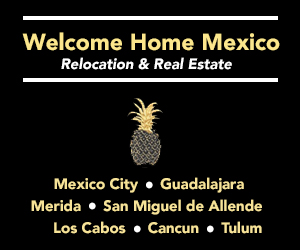Public Transportation in Mexico City
Summary: Mastering the public transportation system in Mexico City is a crucial aspect of adapting to life there. This article provides a detailed overview of the available local transit options.
Mexico City, the capital of Mexico, is a bustling metropolis with a population of over 21 million people. The city is well-served by a variety of public transportation options, including the Metro, Metrobús, Trolebús, light rail, and taxis. These systems are operated by various entities, including the Sistema de Transporte Colectivo (STC), the Sistema de Corredores de Transporte Público de Pasajeros del Distrito Federal (Metrobús), and the Servicio de Transportes Eléctricos del Distrito Federal (Trolebús). With such a comprehensive network of public transportation, it is entirely possible for an expat living in Mexico City to comfortably live without a car, relying instead on these systems and walking.
Metro
The Metro, operated by the STC, is the backbone of Mexico City's public transportation system. With 12 lines and 195 stations, it covers a vast area of the city and its suburbs. The Metro is generally safe to use, even at night, although it can get very crowded during peak hours. Women and children have the option of using the women-only carriages for added safety. A single journey on the Metro costs 5 pesos (about $0.25), making it an affordable option for daily commuting. The Metro also offers a convenient way to explore the city's many tourist attractions, with stations located near landmarks such as the Zócalo, the Palacio de Bellas Artes, and the Frida Kahlo Museum.
Metrobús
The Metrobús is a bus rapid transit system that operates along dedicated lanes, making it a faster and more efficient alternative to regular buses. There are currently 7 lines serving different parts of the city, with buses running every few minutes. The Metrobús is safe and comfortable, with modern buses equipped with CCTV cameras and GPS. The fare varies depending on the distance traveled, but it generally ranges from 6 to 30 pesos (about $0.30 to $1.50). The Metrobús is particularly useful for reaching areas not served by the Metro, such as the trendy neighborhood of Condesa and the historic district of Coyoacán.
Trolebús
The Trolebús, or trolleybus, is a unique form of public transportation in Mexico City. These electric buses run on overhead wires, providing a quiet and environmentally friendly way to get around. The Trolebús operates on 15 routes, covering a wide area of the city. The service is safe and reliable, although the buses can be slower than the Metro or Metrobús due to traffic congestion. The fare is 4 pesos (about $0.20) for a single journey, making the Trolebús an affordable option for both locals and expats.
Light Rail
The light rail, or tren ligero, is a tram-like system that serves the southern part of Mexico City. It has one line with 18 stations, running from Tasqueña (connected to the Metro) to Xochimilco, a UNESCO World Heritage site known for its floating gardens. The light rail is safe and comfortable, with a journey costing 3 pesos (about $0.15). It offers a scenic and leisurely way to travel, especially for those looking to escape the hustle and bustle of the city center.
Taxis and Ride-Sharing
Taxis and ride-sharing services like Uber and Didi are also widely available in Mexico City. They offer a convenient and flexible way to travel, especially for those who prefer not to navigate the public transportation system. However, they can be more expensive than other options, particularly during peak hours or in heavy traffic. It's also important to note that not all taxis are safe – it's recommended to use only sitio taxis (taxis from a taxi stand) or to book through a reputable app.
In conclusion, Mexico City's public transportation system is extensive and diverse, offering a range of options to suit different needs and preferences. While it may take some time to get used to, it's entirely feasible for an expat to live in the city without a car.
About the Author
 Joshua Wood, LPC joined Expat Exchange in 2000 and serves as one of its Co-Presidents. He is also one of the Founders of Digital Nomad Exchange. Prior to Expat Exchange, Joshua worked for NBC Cable (MSNBC and CNBC
Primetime). Joshua has a BA from Syracuse and a Master's in Clinical and Counseling Psychology from Fairleigh Dickinson University. Mr. Wood is also a licensed counselor and psychotherapist.
Joshua Wood, LPC joined Expat Exchange in 2000 and serves as one of its Co-Presidents. He is also one of the Founders of Digital Nomad Exchange. Prior to Expat Exchange, Joshua worked for NBC Cable (MSNBC and CNBC
Primetime). Joshua has a BA from Syracuse and a Master's in Clinical and Counseling Psychology from Fairleigh Dickinson University. Mr. Wood is also a licensed counselor and psychotherapist.
Some of Joshua's articles include Pros and Cons of Living in Portugal, 10 Best Places to Live in Ireland and Pros and Cons of Living in Uruguay. Connect with Joshua on LinkedIn.
Additional Information:
- Best Neighborhoods for Families in Mexico City
- Best Neighborhoods for Single People in Mexico City
- Best International Schools and Bilingual Schools in Mexico City
- 7 Weekend Getaways for Digital Nomads Living in Mexico City
- Fun Classes for Expats Living in Mexico City
- Best Bookstores and Libraries in Mexico City
- Public Transportation in Mexico City
- Best Markets in Mexico City
- Retire in Mexico City Guide
- 7 Tips for Living in Mexico City
- Pros & Cons of Living in Mexico City
- Driving in Mexico City
- Cost of Living in Mexico City
- Health Care in Mexico City
- The Insider's Guide to Mexico City
- Living in Mexico City
- International Schools in Mexico City
- 7 Best Neighborhoods in Mexico City
- Healthcare & Health Insurance in Mexico
- Best Places to Live in Mexico
- Real Estate in Mexico
- How to Buy a Home in Mexico
- What It's Like Living in Mexico City
- Pros and Cons of Living in Mexico 2025
- 2025 Guide to Moving to Mexico
- Members Talk about the Cost of Living in Mexico





